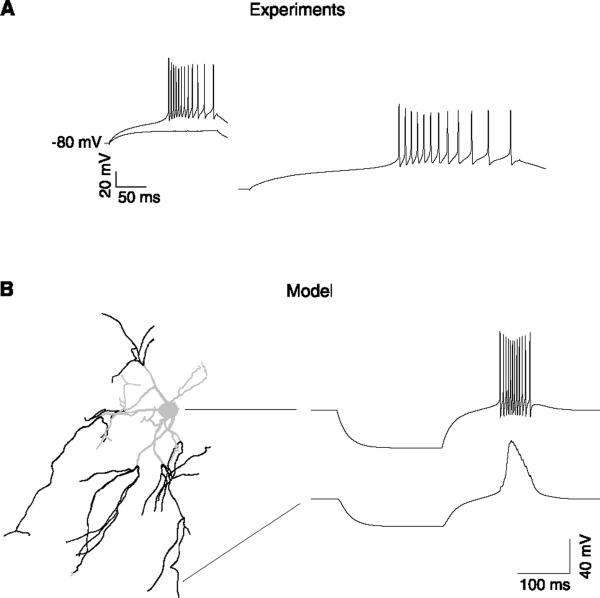FIG. 4.
Bursting properties of thalamic reticular neurons. A: bursts evoked in a rat thalamic reticular neuron in vitro. Bursts were obtained after intracellular injection of depolarizing current pulses. A slight change in injected current amplitude resulted in an apparently all-or-none burst response. Bottom trace indicates a burst on a 5 times faster time scale. B: computational model of burst generation in thalamic reticular neurons with dendritic IT. Left: morphology of a thalamic reticular neuron from rat ventrobasal thalamus, which was reconstructed and incorporated in simulations. The dark areas indicate the dendrites with high density of T-type current (0.045 mS/cm2 in soma, 0.6 mS/cm2 in distal dendrites). Right: burst generated in this model following current injection in the soma (top trace; 0.3 nA during 200 ms). The voltage in distal dendrites (bottom trace) shows a slow rising and decaying calcium spike mediated by ITs. In both cases, the bursts had a slow rising phase, and sodium spikes within a burst showed a typical accelerando-decelerando pattern. [Modified from Destexhe et al. (99).]

